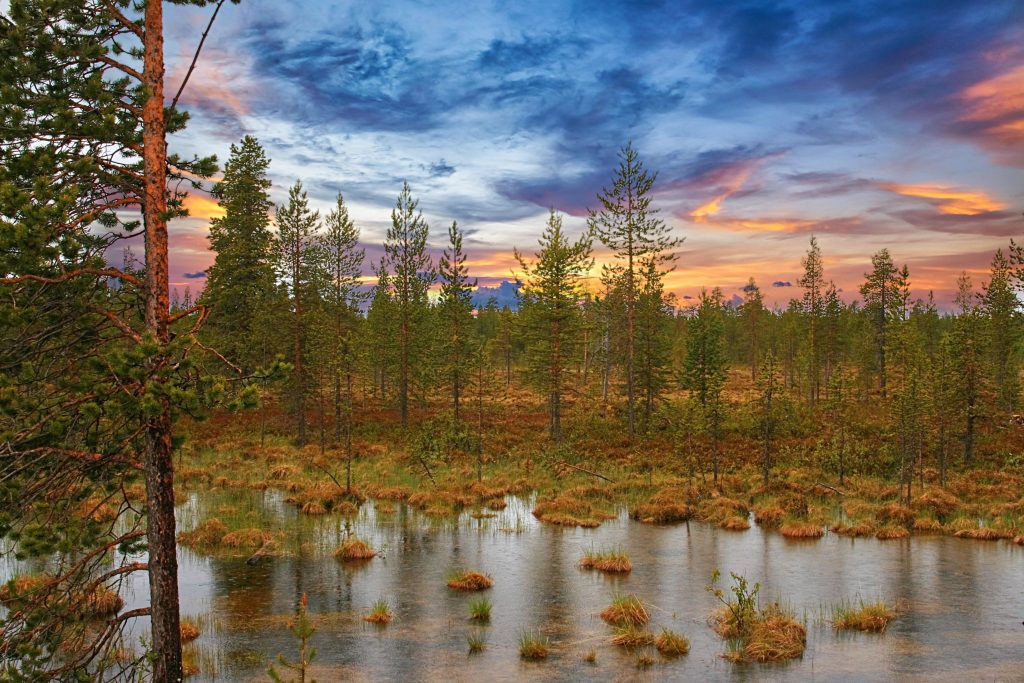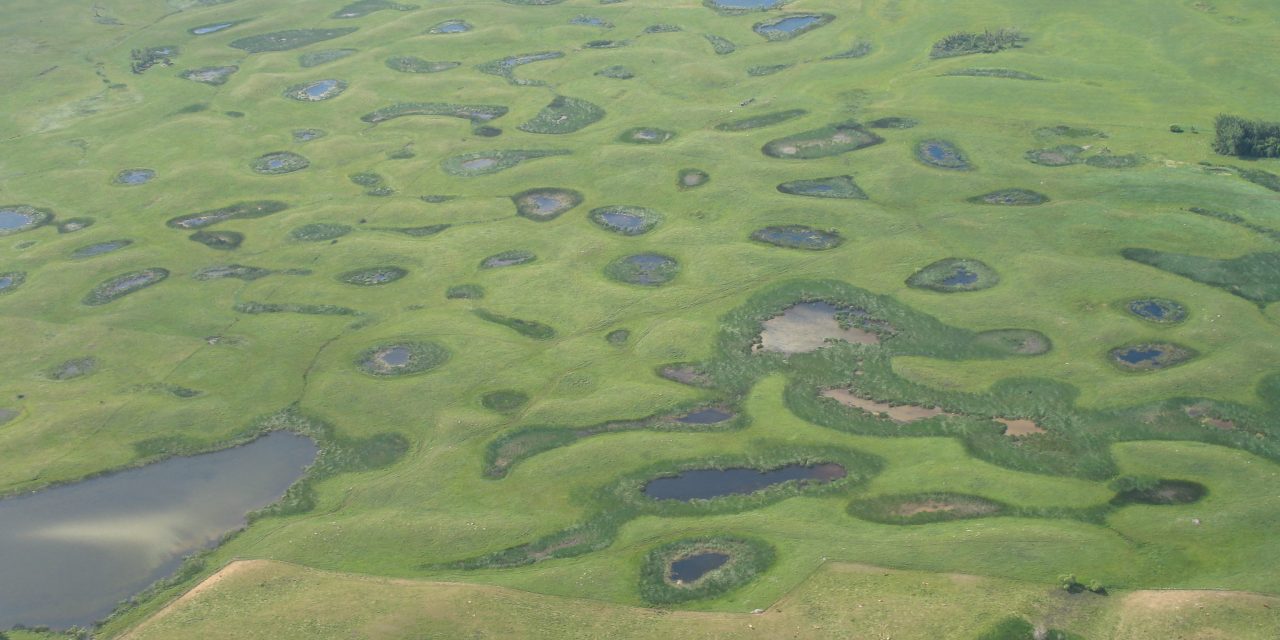New research by environmental scientists from the University of Waterloo (Ontario, Canada) and University of Alabama (Tuscaloosa) shows that small, ephemeral wetlands are more effective at keeping nitrogen out of vulnerable waterways than their larger counterparts. At the same time, these smaller wetlands often receive the weakest legal protections, and are thus more vulnerable to loss.
The team’s conclusions, detailed in the journal Environmental Research Letters, have important implications for development-related wetland loss in the U.S. and beyond, explained Nandita Basu, study co-author and University of Waterloo Ecohydrologist.
Size Matters
In the U.S., larger wetland systems that act as a buffer between inland ecosystems and lakes, rivers, and oceans tend to receive the strongest legal protections under the Clean Water Act.
By contrast, smaller, more isolated wetlands — a broad classification that ranges from New England’s vernal pools, to midwestern prairie potholes, to playa lakes in the southwest U.S., and more — are typically overlooked during development planning processes. These inland wetlands often are ephemeral; they contain water for only part of each year and rarely connect to larger waterways. This means they do not receive protections afforded to “waters of the United States” under the Clean Water Act. The U.S. National Oceanic and Atmospheric Administration estimates that approximately 2,600 km2 (1,000 mi2) of wetlands, most of them ephemeral, were lost in the U.S. between 1996 and 2016.
“If pollutants aren’t caught by small wetlands, then they’ll run into our lakes, beaches, and eventually impact our supply of drinking water and ability to use the beaches for recreation,” Basu said in a release about the study. “This is especially a concern in regions like southern Ontario, which has already lost more than 70% of its wetlands and is under threat to lose more from increasing population and developmental pressures.”
Overlooked and Understudied
Wetland soils typically contain large amounts of organic carbon and little to no oxygen, two factors that enable them to naturally strip reactive nitrogen from passing runoff. Previous research suggests U.S. wetlands reduce more nitrogen in runoff than all other aquatic ecosystems combined, and restoring wetlands is the most cost-effective way to target nutrient pollution at the watershed scale. Much of the existing body of research on wetland-based denitrification, however, focuses on wetlands adjacent to permanent waterways.
Because more water typically leaves ephemeral wetlands via transpiration than outflow, the denitrification process in these ecosystems is more complicated, authors of the new study write. Unlike in connected wetlands, nitrogen tends to remain in the soils of ephemeral wetlands even after water exits the system.
The researchers hypothesized that nitrogen’s higher residence time in ephemeral wetland soils would translate to a more thorough denitrification process.

“Being disconnected can actually be better because [disconnected wetlands] are catching the pollutants and retaining them as opposed to leaking them back to the stream waters,” said first author Frederick Cheng, now a postdoctoral researcher at Colorado State University (Fort Collins), in a release.
To test their theory, the study team selected eight, 1,000-km2 (385-mi2) patches of land in different U.S. regions. Each area contains high concentrations of different types of ephemeral wetlands. These included, for example, playa lakes in Texas, cypress domes in Florida, and sandhills in Nebraska. For each study area, researchers compiled 30 years of satellite imagery that detailed monthly changes in water levels in the ephemeral wetlands.
They used this imagery to estimate fluctuations in nitrogen-removal rates. They based these estimates on specially developed mathematical models to incorporate such additional factors as typical nitrogen concentrations observed in nearby runoff as well as the effects of vegetation, precipitation, and transpiration. According to the authors, this study represents the first-ever documented effort to derive data on nutrient retention from satellite imagery.
Finally, researchers compared their estimates of nitrogen retention in ephemeral wetlands to a “steady state” benchmark — a simulated wetland connected to a permanent water body. In these simulations, study authors modeled a wetland based on the median annual water contents of ephemeral wetlands in their study area, assuming no change throughout the year. They then applied the same calculations to derive comparable estimates of annual nitrogen retention.
Rethinking the Extent vs. Efficiency Relationship
Researchers discovered that longer residence times for nitrogen in ephemeral wetlands led to as much as 130% higher annual nitrogen-removal rates than their connected counterparts.
This difference was especially significant in smaller wetlands — a finding that turns conventional wisdom about the relationship between wetland size and nutrient retention on its head.
In connected wetlands, based on the steady state scenario, modeling indicated that wetlands with a maximum size smaller than 1,000 m2 (10,800 ft2) retained approximately 38% of total nitrogen. The largest connected wetlands, defined as larger than 315,000 m2 (3.4 million ft2), retained approximately 50%. The relationship flips in ephemeral wetlands — smaller ephemeral wetlands retained approximately 88% of total nitrogen while the largest retained approximately 71%.
Temperature and climate also played a major role. The differences between nitrogen retention rates in connected versus ephemeral wetlands were largest in such semi-arid regions as North Dakota’s prairies, where ephemeral wetlands captured nearly twice the amount of nitrogen as connected wetlands. However, small, unconnected wetlands outperformed connected wetlands even in more humid areas.
The research team acknowledges that their methods have inherent weaknesses that could lead to uncertainty in the results. These include the relatively low temporal and spatial resolution of the satellite imagery as well as the mathematical model’s assumptions underscoring the relationship between wetland area and nutrient retention. However, the researchers report confidence in their approach and the resulting data. The team describes in a release that they are now planning to test these principles in Canadian watersheds, supported by a grant from Environment and Climate Change Canada.
Read the full study, “Disconnectivity Matters: The Outsized Role Of Small Ephemeral Wetlands in Landscape-Scale Nutrient Retention,” in Environmental Research Letters.
Top image courtesy of U.S. Fish and Wildlife Service





